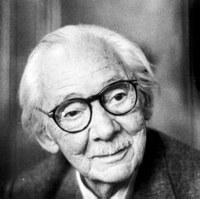Manuel Álvarez Bravo
Mexico City (Mexico), 1902 – 2002
By Ivana Jinkings
 A recognized Latin American photographer, he was self-taught in the arts. During his primary studies, the battles in the streets during the Revolution left marks on his imagination. Manuel Álvarez Bravo took his first daguerreotypes in 1915 with a borrowed camera. Soon after, he worked for the Treasury Department of Mexico while simultaneously studying literature and music at the Academy of San Carlos.
A recognized Latin American photographer, he was self-taught in the arts. During his primary studies, the battles in the streets during the Revolution left marks on his imagination. Manuel Álvarez Bravo took his first daguerreotypes in 1915 with a borrowed camera. Soon after, he worked for the Treasury Department of Mexico while simultaneously studying literature and music at the Academy of San Carlos.
Bravo met his first mentor, German photographer Hugo Brehme, in 1923. That same year, he contacted Edward Weston and Tina Modotti, with whom he later collaborated. The following year, he produced his first photographic works (which he would later destroy) inspired by pictorialism. In 1927, in Mexico City, he opened a gallery with his wife Lola, where he exhibited works by Rufino Tamayo, José Clemente Orozco (1883-1949), Diego Rivera, and Frida Kahlo. During this period, he studied the works of Albert Renger-Patzsch and modernist aesthetics. In 1929, he participated in a collective exhibition held at the Berkeley Art Museum in California alongside Imogen Cunningham, Edward Weston, Dorothea Lange, among others. Through Tina Modotti, Bravo met Rivera and Frances Toor, a writer and editor of Mexican Folkways, a magazine dedicated to studies of Mexican folklore and customs for which he worked. For a short period, he taught photography at the National School of Plastic Arts, directed at that time by Diego Rivera. In 1930, Russian filmmaker Sergei Eisenstein came to Mexico to film ¡Que viva México!, photographed by Bravo. In 1930, he turned his lenses exclusively to photography and cinema.
Admired among artists linked to the muralist movement, Álvarez Bravo was invited to document the works of the group in images that were later published in the book Painted Walls of México, by Emily Edwards. In 1934, he met Henri Cartier-Bresson, with whom he prepared an exhibition at the Palace of Fine Arts. That same year, he produced the feature film El obrero asesinado. He also directed some experimental films, many of which have been lost. As a film photographer, he worked with Luis Buñuel and John Ford until, in 1959, he abandoned that activity. In 1936, he taught for a few months at the Hull House Art School in Chicago and, two years later, at the Academy of San Carlos. In 1939, André Breton included his works in a surrealist exhibition in Paris. By the 1940s, he was established as one of the greatest art and cinema photographers in the world. In 1955, he participated in the famous exhibition The Family of Man in New York.
He received various international awards for his work, including the Guggenheim Fellowship, the Sourasky Art Prize from the Ministry of Public Education, the title of Master of Photography from the International Center of Photography in New York, the Hugo Erfurth International Photography Award from the German government, and the Peer Award (Friends of Photography, San Francisco, California). He was also named an honorary member of the Academy of Arts of Mexico and Officier of l’Ordre des Arts et des Lettres by the French government. He also collaborated on the book Instante y revelación, with poet Octavio Paz. In 1996, the Manuel Álvarez Bravo Photographic Center was inaugurated in Oaxaca. The following year, Susan Kismaric organized a retrospective of his work at the Museum of Modern Art in New York.
Published 31/08/2016, updated 03/07/2017.


